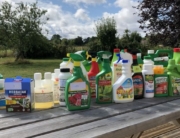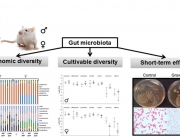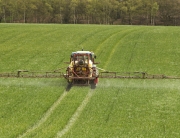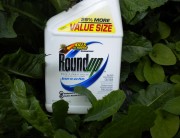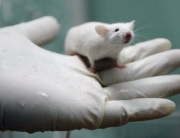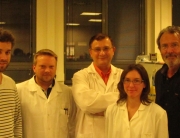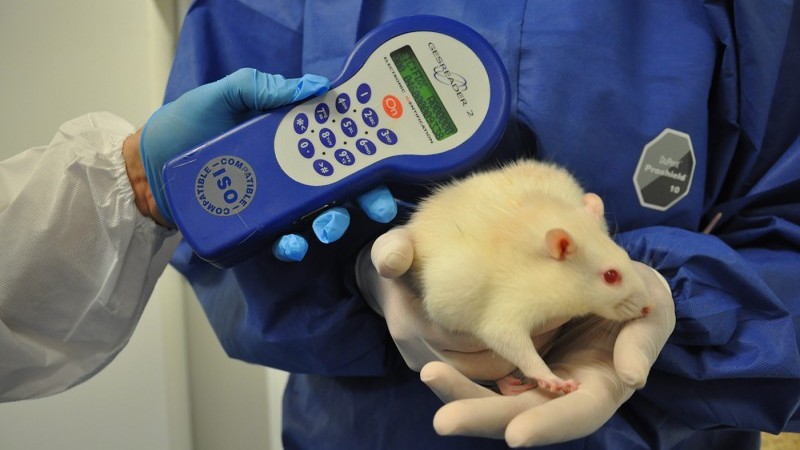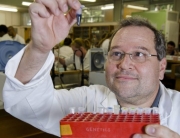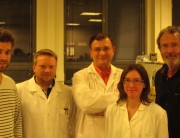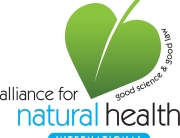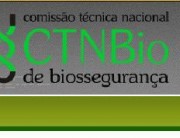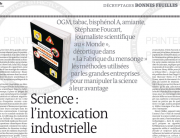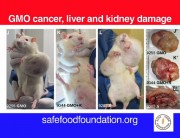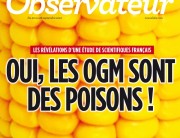- Pesticide formulations as sold and used are up to 1000 times more toxic than the isolated substance that is tested and evaluated for safety
- Roundup the most toxic of herbicides and insecticides tested
- Flawed safety evaluations put public health at risk
Does the fact that a pesticide is approved by regulators mean it is safe? A new study suggests not – and casts into question the assumptions on which all regulatory authorizations of pesticides are based.
Pesticides are authorized for use based on medium- or long-term tests on laboratory animals. These are carried out with a single chemical ingredient, which is known as the active ingredient because it is assumed to be responsible for giving the pesticide its pest- or weedkilling action.
However, the complete pesticide formulations as sold and used also contain additives (adjuvants), which increase the pest- or weedkilling activity of the pesticide. These complete formulations do not have to be tested in medium- and long-term tests – even though they are the substances to which farmers and citizens are exposed.
This is a serious defect of the regulatory process, according to a newly published study by the team of Professor Séralini (Mesnage et al. 2014, Biomedical Research International). The study found that for eight major pesticides (out of a total of nine analyzed), the commercial formulation is up to 1000 times more toxic than the active ingredient assessed for safety by regulators.
The study was carried out in vitro on three types of human cells. The principle that pesticide formulations are more toxic than the active ingredients has been confirmed for some pesticides in live animals (in vivo) by independent scientists. However, industry does not have to do long-term animal safety tests on the complete formulations to get their products on the market.
Dr Robin Mesnage, a co-author of the study, said, “More studies have to be done because even if the toxicities of the active ingredients are well described for some of these pesticides, little or nothing is known about their adjuvants or their formulations.”
The study produced another surprise outcome. Roundup is often claimed to be a benign herbicide that is widely used in public spaces and by home gardeners as well as by farmers. Yet the researchers found it was by far the most toxic of all the herbicides and insecticides they tested. They also found that fungicides are toxic at concentrations 300 to 600 times lower than those used in agriculture.
Prof Gilles-Eric Séralini, who led the study, said, “The real toxicity of pesticides used in intensive agriculture has been hidden from farmers, policy-makers and citizens. Scientific experts in health agencies have a clear responsibility to overhaul the regulatory system in order to assess pesticides more realistically. To do nothing is at best a denial of knowledge and at worst could endanger people’s lives.”
Notes
1. Mesnage R, Defarge N, Spiroux de Vendômois J, Séralini G-E. Major pesticides are more toxic to human cells than their declared active principles. Biomedical Research International, 2014.
—
Major pesticides are more toxic to human cells than their declared active principles
Mesnage R, Defarge N, Spiroux de Vendômois J, Séralini G-E
Biomedical Research International, 2014.
Pesticides are used throughout the world as mixtures called formulations. They contain adjuvants, which are often kept confidential and are called inerts by the manufacturing companies, plus a declared active principle (AP), which is usually tested alone. This is true even in the longest toxicological regulatory tests performed on mammals. We tested the toxicity of 9 pesticides, comparing active principles and their formulations, on three human cell lines (HepG2, HEK293 and JEG3). We measured mitochondrial activities, membrane degradations, and caspases 3/7 activities. Glyphosate, isoproturon, fluroxypyr, pirimicarb, imidacloprid, acetamiprid, tebuconazole, epoxiconazole and prochloraz constitute respectively the active principles of 3 major herbicides, 3 insecticides and 3 fungicides. Fungicides were the most toxic from concentrations 300-600 times lower than agricultural dilutions, followed by herbicides, and then insecticides, with very similar profiles in all cell types. The human placental JEG3 cells appeared to be the most sensitive. Despite its relatively benign reputation, Roundup was by far the most toxic among the herbicides and insecticides tested. Most importantly, 8 formulations out of 9 were several hundred times more toxic than their active principle. Our results challenge the relevance of the Acceptable Daily Intake for pesticides because this norm is calculated from the toxicity of the active principle alone. The study of combinatorial effects of several APs together may be of only secondary importance if the toxicity of the combinations of each AP with its adjuvants is neglected or unknown. Chronic tests on pesticides may not reflect relevant environmental exposures if only one ingredient of these mixtures is tested alone.
Other Good Media Coverage: http://www.foodnavigator.com/Science-Nutrition/Pesticide-toxicity-vastly-understated-claims-new-Seralini-study







